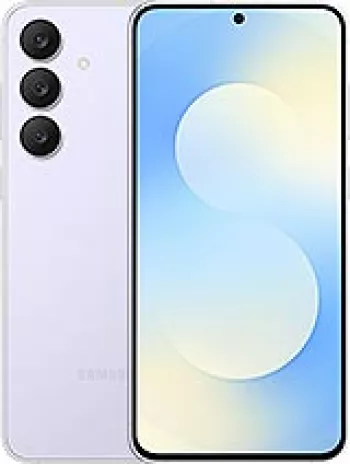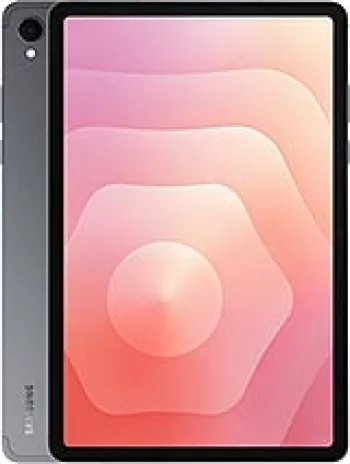
Overview
The Samsung P300, introduced in the fourth quarter of 2005, is a feature phone that stands out due to its ultra-slim design and compact form factor. Despite its small size, the P300 incorporates a range of features that were advanced for its time. Aimed at users who preferred practicality and simplicity, the device gained a following among those who appreciated its unique styling and basic feature set.
Design and Build
One of the most remarkable aspects of the Samsung P300 is its design. With dimensions of 86 x 54 x 8.9 mm, it resembled a calculator and was often dubbed the "calculator phone". Weighing just 85 grams, it is incredibly lightweight and portable. The device's slim profile, at only 8.9 mm thick, made it one of the slimmest phones available in its era. The phone is encased in a silver finish, giving it a sleek and professional appearance.
Display
The Samsung P300 features a 1.8-inch TFT display supporting 256K colors, which was quite standard for the phones during that period. The display resolution is 220 x 176 pixels, resulting in a pixel density of approximately 157 ppi. While not groundbreaking by today’s standards, the screen was adequate for simple tasks such as messaging and viewing photos.
Camera
Fitted with a 1.3 MP camera, the Samsung P300 allows users to capture basic photos and videos. Although the camera does not support advanced features like autofocus or high-resolution imaging, it does include an LED flash to assist in low-light conditions. The camera quality reflects the period's technology, offering simple photography capabilities.
Performance
The Samsung P300 operates as a feature phone, which means it was designed primarily for calls and text messages rather than running complex applications. The phone includes standard processing power for the operations it supports, and while it does not have expandable memory, users could utilize the 80MB of internal storage for their media and essential applications.
Connectivity
Network capabilities include GSM technology with 2G bands supported on GSM 900, 1800, and 1900 frequencies. Data transmission is supported through GPRS Class 10, although EDGE is not available. The lack of modern connectivity options like Wi-Fi or advanced GPS is noticeable, but the device does support Bluetooth 1.2 with A2DP for wireless audio.
Battery Life
Powered by a removable Li-Ion 800 mAh battery, the Samsung P300 offers a standby time of up to 160 hours and a talk time of around 3 hours. While this may seem limited by today's standards, the battery life was adequate for moderate usage at the time the phone was released.
Memory and Storage
With no card slot available for expandable memory, users are limited to the built-in 80MB of storage. The device can store up to 1000 contacts, with 10 fields per contact, allowing for photo call functionality. Call records store up to 30 dialed, 30 received, and 30 missed calls, reflecting the typical usage patterns of a feature phone.
Software and Features
The Samsung P300 includes basic software features such as SMS, EMS, MMS, and email messaging. It also supports WAP 2.0/xHTML for basic web browsing and includes standard games like Bobby Carrot and Freekick, with Java MIDP 2.0 support to download additional games. These features emphasize the phone’s focus on fundamental communication and entertainment functionalities.
Audio and Multimedia
Despite its minimalist design, the phone includes a loudspeaker and supports vibration alerts, with downloadable polyphonic and MP3 ringtones. However, it lacks a 3.5mm audio jack, which would have restricted media playback options compared to modern devices.
Conclusion
The Samsung P300 is a reminder of a transitional phase in mobile phone technology, where style and compactness were as valued as functionality. Although it lacked many features we consider essential today, such as high-speed internet access and advanced app support, it fulfilled the essential needs of communication and simple multimedia use. Its unique design, portability, and basic feature set created a niche market of users who appreciated simplicity and ease of use in an ever-complicating tech world.
Key Features of Samsung P300
- Compact and lightweight design with dimensions 86 x 54 x 8.9 mm and weight of 85 g.
- GSM technology supporting 900/1800/1900 bands.
- TFT display with 256K colors and resolution of 220 x 176 pixels.
- Built-in 1.3 MP main camera with LED flash and video recording capability.
- Bluetooth 1.2 with A2DP support for wireless connectivity.
- 80 MB internal memory with photo call functionality.
- Support for up to 1000 contacts in the phonebook with multiple fields per contact.
- Removable Li-Ion 800 mAh battery with up to 160 hours stand-by and 3 hours talk time.
- Support for SMS, EMS, MMS, and Email messaging services.
- Java support with MIDP 2.0 for expandable game and app options.
Disadvantages of Samsung P300
- Lacks EDGE support for faster data connectivity.
- No expandable memory through a card slot.
- The screen size is relatively small at 1.8 inches with a low screen-to-body ratio.
- Only 80MB of internal memory available.
- No 3.5mm headphone jack available.
- Limited camera capabilities with only a 1.3 MP main camera.
- Absence of a selfie camera.
- No WLAN support for wireless internet connectivity.
- No GPS or positioning capabilities.
- Does not include a built-in FM Radio.
- Proprietary USB connection limits compatibility with other devices.
- The device has been discontinued, affecting support and availability of spare parts.

View Also
More Phones
All Rights Reserved +14266 Phones © Mobilawy 2025

























